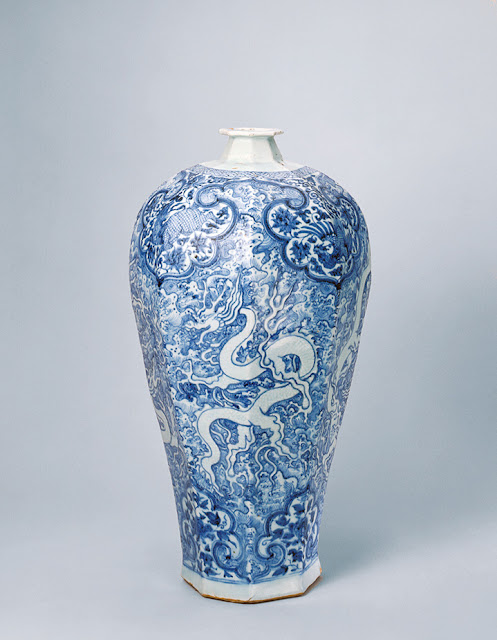CHINA'S SOFT POWER OFFENSIVE DRAWS BIG CROWDS IN TOKYO
Chinese culture is on the long, slow rebound. Back in 1989, the government was shocked by the sudden appearance at the heart of the state of an icon of Western culture: a ten-meter-tall statue created by protesting students that was obviously modelled on the Statue of Liberty. For the five days it stood, before the government sent in the tanks to destroy it, the Goddess of Liberty, as it was called, helped to galvanize the protesters who were calling for the same kind of Western-style democracy and freedom that was then sweeping communist Europe.
The statue revealed the virulent nature of Western cultural memes and the destabilizing effect they could have on a Chinese society that had in large part moved away from its own traditional culture due to Communism, which was itself something of a cultural import from the West.
 |
| Western meme |
Now, as the world’s second biggest economy, it is no longer quite so easy for the Chinese government to use such negative tactics to protect itself from outside cultural influences, hence a recent speech and article by President Hu Jintao, calling attention to a culture war between China and the West, raising the issue of “cultural security,” and stating that the country must defend itself against the assault of Western culture by strengthening and asserting its own culture.
Here in Tokyo, President Hu’s latest pronouncements on this burgeoning cultural war came against the backdrop of a large-scale demonstration of Chinese cultural power, “200 Selected Masterpieces from the Palace Museum Beijing,” a major exhibition of Chinese art and historical artifacts at Japan’s most prestigious museum, the Tokyo National Museum. It is something of an irony that these works come from an institution that overlooks the site where the Western cultural memes that helped power the 1989 protest movement were crushed.
But the tumultuous events of Tiananmen Square seem a long way from the orderly queues of mainly elderly visitors patiently waiting up to three hours to file past Riverside Scene at Qingming Festival, a famous, five-meter-long, silk handscroll painting by the Northern Song Dynasty (960-1127) painter Zhang Zeduan that was on display until January 24th.
If the Chinese government is aiming to bolster their soft power overseas, then they have started with the right audience. While the West’s secret weapons – Lady Gaga, Harry Potter, and movies like Transformers – may be making cultural inroads into China, the visitors here have clearly come to revel in the splendour of Chinese culture with a degree of reverence that reminds us that beneath the ‘veneer’ of the last 150 years of Westernization, Japan is much more part of the Sinic cultural sphere than the Western one.
In addition to Riverside Scene at Qingming Festival, the show features several other lengthy scroll paintings whose vast dimensions and astounding quality seem partly designed to overawe us. A good example is the 26-meter-long Emperor Kang Xi on an Inspection Tour to the South (Volume 12) (1691). This shows thousands of beautifully-painted, individual figures in an enormous procession returning to the Forbidden City.
Riverside Scene at Qingming Festival
In addition to the skill and diligence of the painters, we are also struck by the meticulous organization that must have gone into creating the actual event depicted. In this, thousands of guards, officials, and servants accompany the emperor, whose tiny figure we finally detect carried in a palanquin.
The exhibition includes items from most of the significant periods from Chinese history, including bronzes from the Shang Dynasty (c.1600 BC – 1046 BC), which is often taken as the starting point of a strong Chinese civilization. This serves to remind us that China in its vastness is also the most enduring civilization. But despite representative items from earlier dynasties, most of the show is dedicated to the Qing dynasty, set up by Manchu invaders in 1644.
Why the Qing Dynasty should be accorded such attention at this exhibition is an interesting question. It is tempting to see parallels between the Manchu ruling class and today’s Communist Party elite. In the initial stages of gaining power, both groups repressed the indigenous culture of the Chinese; one as semi-barbarous invaders, the other as Marxist modernizers bent on sweeping away ancient traditions. However, in order to entrench their power and unify the country, both realized there was a need to embrace Chinese culture.
A key figure in the exhibition is the Emperor Qian Long, whose reign stretched from 1736 to 1795. He is seen everywhere, most impressively in a couple of large portraits by the Italian Jesuit painter Giuseppe Castiglione. One shows the emperor on horseback in armour, in allusion to the “Ten Perfect Campaigns” associated with his name that extended Manchu power to its furthest limits.
While hard power was important to Qian Long so was soft power. In other paintings he is shown as a Buddhist bodhisattva and a literary gentleman, revealing that the emperor was keen to place himself not only at the head of the Empire’s armies, but also its religious and cultural life. While this tells us a lot about Chinese history, the prominence accorded Qian Long in this exhibition also reveals a great deal about the intentions of China’s present day rulers. Whether this will be enough to see off the likes of Lady Gaga however remains to be seen.
Colin Liddell
Japan Times
26th January, 2012
Labels
China,
Hu Jintao,
Palace Museum Beijing,
Qian Long,
Qing Dynasty,
soft power,
TNM,
Zhang Zeduan
































Post A Comment
No comments :